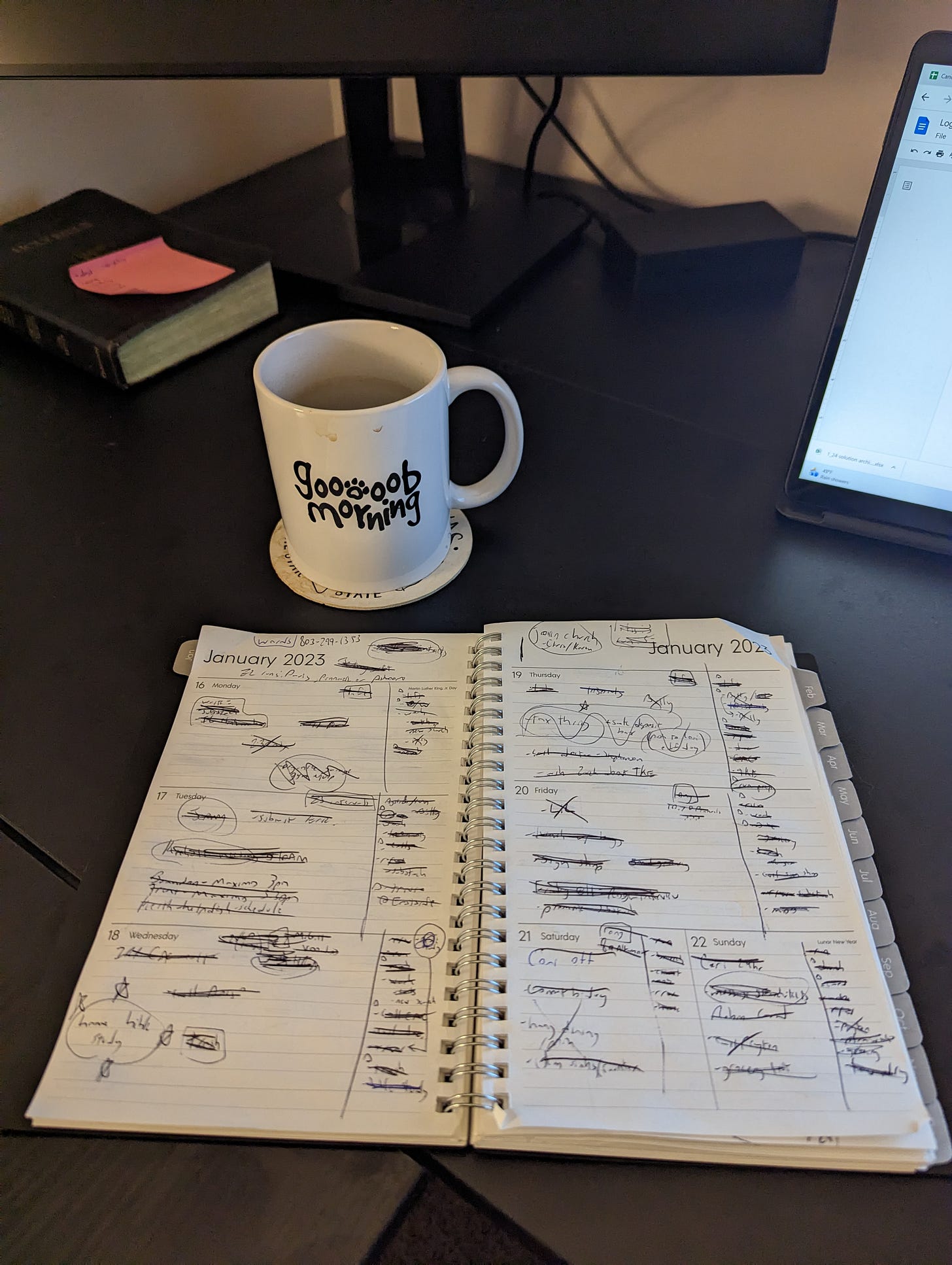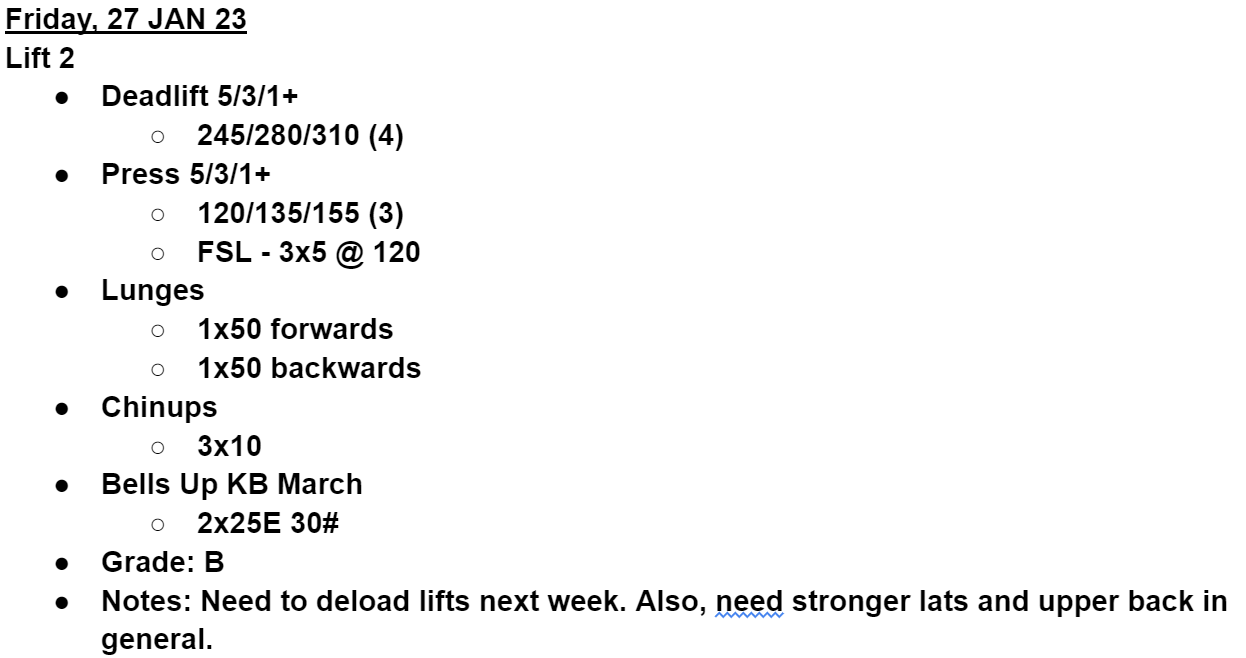Logging and Tracking My Training
This is how I record and organize my lifting and running metrics to monitor my progress.
I’ve always been really into writing things down, almost to an obsessive degree. Can you remember when you were in elementary school and the kids would all get issued a spiral planner or agenda that nobody used? Well, I used them, and still do to this day as a 27-year-old. I’ll write down everything I need to get done, check on, or remind myself of–birthdays, training, work calls, all of it. Each night, I’ll make a more in-depth plan for the next day and schedule out all of my tasks in order. I cross out the things I’ve knocked out as I go and circle the ones that I didn’t have time for to ensure I get it done the next day. It really works well for me, but if anybody stole my planner, they would think I’m a serial killer.
It doesn’t stop with the planner. I litter my desk with sticky notes, make lists, record my annual goals, and highlight and make notes in books. For me, writing or typing things seems to increase my likelihood of success. It’s also paramount in keeping me honest when evaluating my training.
I record all of my training on a Google Doc or Google Sheets file. While I love to physically write things out in pen or pencil, I’ve found the Google option to work best because I pretty much always have my phone with me, the information is backed up to my Google Drive, and it’s easy to share or email. Currently, I have three documents that I use on a weekly basis. That may seem a bit excessive, but they all have their purpose.
Daily Training Log - I record all of my training–both strength and endurance work–in my training log Google Doc. For lifts, I’ll include movements, sets, reps, and weights. For runs, I will enter the distance, time, pace, elevation gain, heart rate, cadence, weather, and route. Another advantage of using the Google Doc over a written notebook is that I can easily search for a movement or route in a previous workout and compare data (i.e. weight lifted or speed/mileage ran) to ensure I’m progressing appropriately. For both strength and endurance workouts, I will include a grade and notes on how it went. I adopted my grading scale from Training for the Uphill Athlete.
A - means you felt like Superman and had plenty in reserve.
B - means it was a good workout. You completed the task no problem.
C - means you did the workout but felt flat or off.
D - means you could not finish the planned workout or had to reduce it.
F - means you could not train that day due to fatigue or illness.
By grading each workout this way, you can make a quick scan of your training log over the previous few weeks and see trends or patterns. A good rule of thumb is that if you have more than two Cs in a row, or a C and a D within one week, you need to stop and assess what is going on.
In addition to logging individual workouts, I will enter a “weekly wrap” each Sunday evening. This summary includes my sleep, resting heart rate, body weight, running volume, and notes for the training week. That brings me to my next document…
Training Week Metrics Spreadsheet - This is nothing more than a spreadsheet that displays the data from my “weekly wraps” in a way that I can monitor these metrics over time. Glancing at this each week ensures that I’m progressing appropriately in running volume as I approach my race, but it transcends mere performance. Unexplained fluctuations in resting heart rate, weight, or sleep could be indicators of potential health problems. Fortunately, all my metrics look to be pretty stable. As you can see, my sleep really sucked back in October when I had the flu and I had a small jump in resting heart rate in January when I was on a ski trip at high altitude.
5/3/1 Spreadsheet - I’ve been using this spreadsheet template for almost 7 years. Its cells are formulated to spit out appropriate training weights for my three-week 5/3/1 cycles based on my training maxes for the squat, bench press, deadlift, and overhead press. I simply add another tab and change the training max as needed each time I’m ready to start a new cycle. Like with my daily training log, it’s easy to access historical data. Sometimes I’ll jot down the accessory exercises I plan on doing at the bottom. I also have a tab with all of my “rep PRs” on the main lifts. You can utilize this spreadsheet approach for any percentage-based strength program, not just 5/3/1. Just make sure to double check your formulas, or you may get a nasty surprise when your spreadsheet tells you to lift 95% of your training max for 5 reps.


It’s certainly not necessary to use three different documents to log and track your training, but I would highly recommend finding a protocol for recording workouts that will work for you and sticking with it. Whether you’re an elite athlete or just a regular person who exercises for health reasons, it’s important to monitor your progress. How do you track your workouts?






